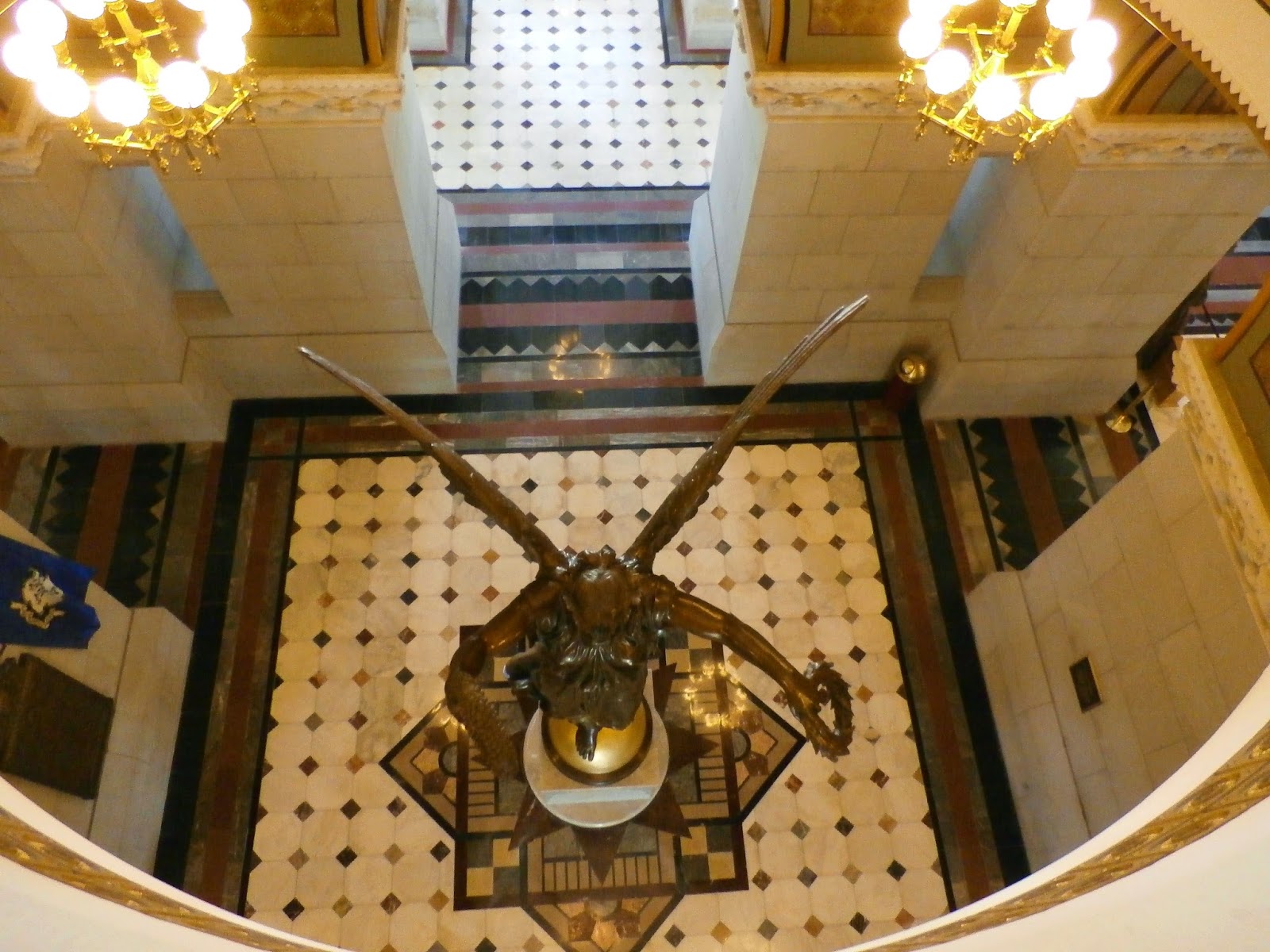Sometimes it's hard to figure out how the locals
pronounce the names of their towns, lakes, rivers, and other geographical
designations. Case in point: Mashamoquet Brook State Park in Connecticut,
located just down the road from the RV Park where we stayed for one month. My
first thought was Mash-ah-mokay, putting a French spin on the
pronunciation. Turns out it isn't pronounced anything like that. We decided to
take a hike on the trails running through the park, so when we arrived at the
Ranger Station, I asked the ranger for the correct pronunciation. She
explained it was pronounced Mash-Mucket. Who knew? In any case, no matter how
you say it, we enjoyed a hike and a picnic lunch at this very lovely wooded
park, with lots ups and downs, giving our legs a good workout. Of particular
note, and sadly, the park is home to the Israel Putnam Wolf Den, where in 1742 Israel
Putnam shot and killed Connecticut's last known wolf. The site was added to the
National Register of Historic Places in 1985.
In 2007 Dan and I retired from work, hitched our 5th wheel to our truck, and hit the road. We are full time RV'ers so we take our home with us everywhere we go. We live by the credo "Home Is Where You Park It" and we have found Home in many an awesome setting! I created this blog to track our adventures as we travel around the US, Canada, and Mexico. Two of our goals include visiting all the State Capitals and as many of the Baseball Parks as possible, with everything else we can fit in between!
Sunday, August 31, 2014
Mark Twain House and Museum (Hartford, Connecticut)
During our visit to Connecticut
Labels:
August 2014,
Connecticut,
Hartford,
Mark Twain,
Mark Twain House & Museum,
Museums
Hartford, Connecticut
Our next Capitol visit in the New England
states was to Hartford , Connecticut Connecticut
Labels:
August 2014,
Capitol Buildings,
Connecticut,
Hartford,
State Capitals
Saturday, August 23, 2014
Providence, Rhode Island
Labels:
August 2014,
Capitol Buildings,
Providence,
Rhode Island,
State Capitals
Subscribe to:
Comments (Atom)








































.JPG)








.JPG)
.JPG)
.JPG)
